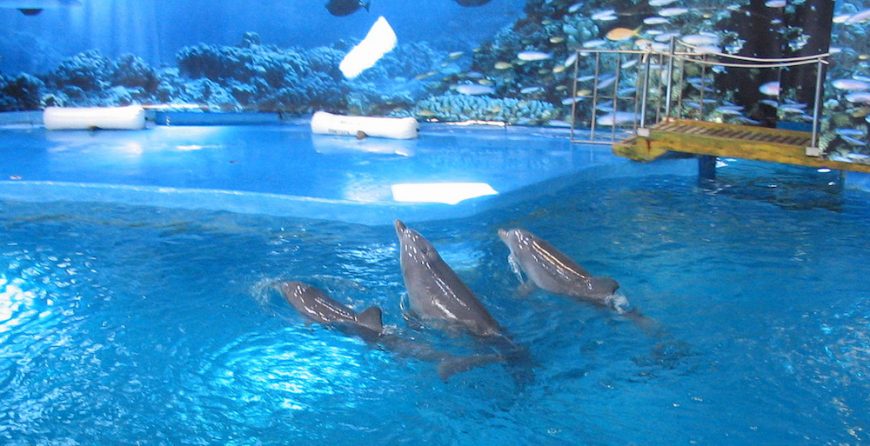CHARLOTTE AMALIE — Four remaining dolphins at an Arizona facility where four other dolphins have died have moved into a new home in St. Thomas.
Coral World Ocean Park in Water Bay announced the arrival of the four Atlantic bottlenose dolphins late Wednesday.
In a statement , the park said the dolphins are being cared for in a 69,000-square-foot (6,410-square-meter) ocean habitat enclosed by a mesh barrier that extends over 20 feet (6 meters) down to the ocean floor.
The animals are healthy and exploring their new environment, Lee Kellar, Coral World’s general curator, said on Thursday.
All four dolphins were born in captivity, so this is their first exposure to natural sea water, waves, currents and squids and fish swimming with them.
They had been living at Dolphinaris Arizona. Four dolphins have died at the Scottsdale, Arizona, facility since it opened in 2016. It closed temporarily this month as experts investigate what caused the marine mammals’ deaths.
The relocation was a joint decision with Dolphin Quest, which owns two of the dolphins, so the animals could maintain the bond they developed over the last two years, Dolphinaris Arizona spokeswoman Jen Smith said in an emailed statement.
“The seaside sanctuary at Coral World mirrors our habitats (in Hawaii), so our dolphins will be very familiar with this enriching environment. The other two dolphins have the benefit of acclimating to their new home with dolphins in their family who are very familiar with this type of natural environment,” said Rae Stone, Dolphin Quest’s marine mammal veterinarian, in an emailed statement.
Animal rights advocates have criticized the Arizona facility, saying that putting dolphins in pools in the desert was tantamount to animal cruelty.
“It was imperative for these dolphins to get out of that situation because something wasn’t right,” Kellar said.
“The folks who have been caring for these animals were doing everything right. Their track record with other dolphins in other facilities is stellar. It’s just that that particular place is not good for dolphins,” he said.
The dolphins are the first at the St. Thomas park. Kellar said the “sea sanctuary” has been in the works with private funding for seven years and meets federal requirements under the Marine Mammal Protection Act and the Animal Welfare Act.
Coral World trainers will spend the next several months getting the animals used to their new home before introducing them to the public. How close park visitors will get to the dolphins will depend on how the animals adapt, Kellar said.
“We’re excited we can provide them a home, but also start looking at what it takes for dolphins to go from the pool environment to adapting to a sea sanctuary,” Kellar said.
Animal rights advocates have called for all marine mammals in captivity to be moved to seaside sanctuaries. SeaWorld and other institutions keeping marine mammals have rejected that idea, saying the animals are safest in their current displays, where they help educate the public about marine life in the wild.
The National Aquarium in Baltimore swam against the industry current, however, and announced plans in 2016 to move its pod of dolphins into an ocean enclosure by the end of 2020.
Smith said the Scottsdale facility plans to reopen without dolphins but still focused on ocean conservation and education.




